Solar generators have emerged as an innovative and environmentally-friendly solution. By harnessing the power of the sun, solar generators provide off-grid capabilities for homes, empowering homeowners with greater control over their energy needs.
Power inverters are a crucial component in solar power generation systems, as they enable DC (direct current) electricity produced by solar panels and batteries to be converted into AC (alternating current) electricity that can be used to power appliances and devices.
In off-grid power systems, it’s important to choose a power inverter that is appropriate for the size and capacity of the system. The power inverter should be able to handle the maximum power load that will be required, and it should be designed to work with the batteries and charge controller in the system.

Your power requirements and the appliances you need to power and time determine the size of your system including the inverter, solar panels, and batteries. However, while many factors might change the inverter power rating will be a constant when sizing your system according to your needs. So What Size Inverter do I need for my home?
The common output power rating for off-grid inverters ranges from 100 watts to 10,000 watts. The size of the inverter you need will depend on the amount of power you need to run your appliances and devices.
For example, you’ll just need a small inverter to power a few lights and a small refrigerator but a larger inverter for some high-wattage appliances.
How an Inverter Works
An inverter is a device that changes DC power stored in a battery to standard 120/240 VAC electricity (also referred to as 110/220). Most solar power systems generate DC current which is stored in batteries. Nearly all lighting, appliances, motors, etc., are designed to use ac power, so it takes an inverter to make the switch from battery-stored DC to standard power (120 VAC, 60 Hz).
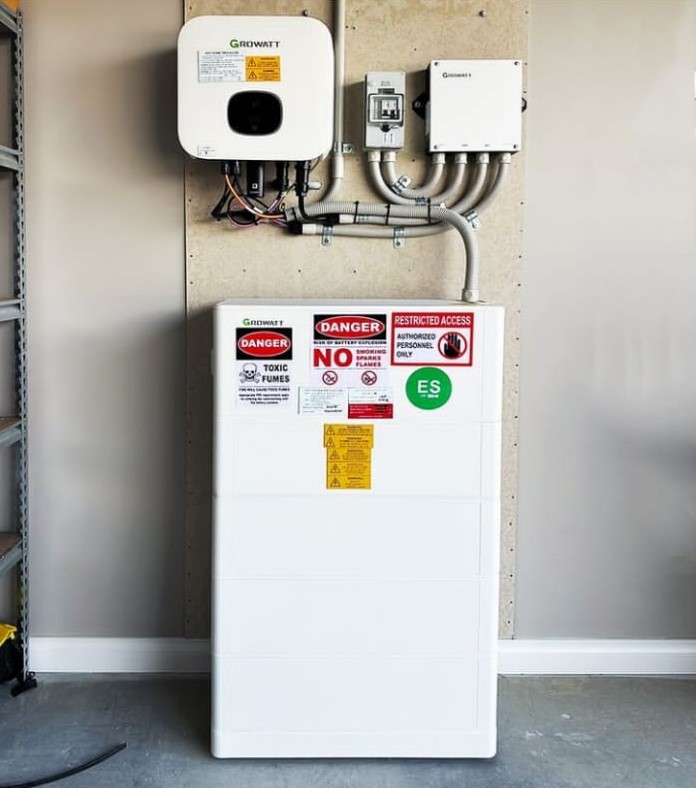
In an inverter, direct current (DC) is switched back and forth to produce alternating current (AC). Then it is transformed, filtered, stepped, etc. to get it to an acceptable output waveform. The more processing, the cleaner and quieter the output, but the lower the efficiency of the conversion. The goal becomes to produce a waveform that is acceptable to all loads without sacrificing too much power into the conversion process.
Inverters come in two basic output designs – sine wave and modified sine wave. Most 120VAC devices can use the modified sine wave, but there are some notable exceptions.
Devices such as laser printers that use triacs and/or silicon-controlled rectifiers are damaged when provided mod-sine wave power. Motors and power supplies usually run warmer and less efficiently on mod-sine wave power.
Some things, like fans, amplifiers, and cheap fluorescent lights, give off an audible buzz on modified sine wave power. However, modified sine wave inverters make the conversion from DC to AC very efficient. They are relatively inexpensive, and many of the electrical devices we use every day work fine on them.
Sine wave inverters can virtually operate anything. Your utility company provides sine wave power, so a sine wave inverter is equal to or even better than utility-supplied power. A sine wave inverter can “clean up” utility or generator-supplied power because of its internal processing.
Inverter Ratings and Portable Solar Generators
Solar generators are devices that use solar panels to generate electricity. The electricity is then stored in a battery, which can be used to power appliances and devices. Solar generators typically have an inverter built-in, which converts the direct current (DC) electricity from the battery to alternating current (AC) electricity, which is the type of electricity used by most appliances and devices.
Solar generators come in a variety of sizes and power ratings. Some solar generators are small enough to fit in a backpack, while others are large enough to power an entire house.
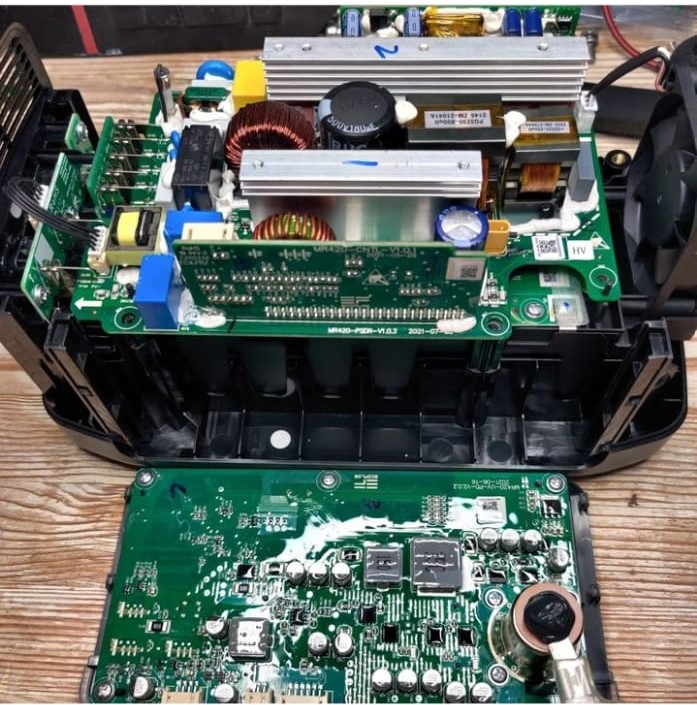
The size of the inverter will determine the maximum amount of power that the solar generator or portable power station can deliver to the loads. If you have higher power demands, such as running power tools or appliances, you will need a larger inverter with a higher output.
The size and power rating of the solar generator you need will depend on your needs.
Inverter rating and watt-hour rating are two important parameters that are used to size a solar generator. By knowing both the inverter rating and watt-hour rating of a solar generator, you can determine the maximum load that it can handle and how long it can provide power. This information is important in sizing a solar generator to meet your specific power needs.
Solar generators are a great way to have backup power and to power your devices while you’re camping or off-grid. If you’re looking for a reliable and efficient way to generate electricity, a solar generator is a great option.
Solar generators and portable power stations are typically designed to be used for camping, outdoor activities, or as backup power in case of emergencies. They usually consist of a battery bank, solar panels, and an inverter, all housed in a compact and portable unit. Because they are smaller and designed for more limited use than an off-grid solar power system, the inverter size has a slightly different impact on their performance.
Portable solar generators typically use small, lightweight inverters that are designed to convert the DC power from the battery to AC power that can be used to power household appliances, electronics, and other devices. These inverters are usually built into the solar generator unit and are optimized for use with solar panels and batteries.
The type of inverter used in a portable solar generator depends on the size and capacity of the unit, as well as the intended use. Some of the most common types of inverters found in portable solar generators include:
Pure sine wave inverters are more expensive than modified sine wave inverters, but they produce a cleaner, smoother AC power output that is suitable for sensitive electronics and appliances. They are also more efficient and can improve the performance and lifespan of devices that are powered by the solar generator.
Here are a few things to consider when it comes to inverter size and solar generators/portable power stations:
Power Output
Charging Capabilities: The size of the inverter will also impact the charging capabilities of the solar generator or portable power station. If you have a larger inverter, you can usually charge the battery bank more quickly from the solar panels or from an AC power source, such as a wall outlet or generator.
Portability
With solar generators and portable power stations, portability is key. The larger the inverter, the larger and heavier the unit will be, which can make it more difficult to transport and use on the go. You may need to find a balance between power output and portability, depending on your specific needs
Cost
Generally, larger inverters are more expensive than smaller inverters. You’ll need to weigh the cost of a larger inverter against your specific power needs and budget.
Overall, when it comes to solar generators and portable power stations, the size of the inverter is still an important consideration, but it needs to be balanced with other factors such as portability and cost. The inverter size will impact the power output and charging capabilities of the unit, so it’s important to choose an inverter that is appropriately sized for your specific needs.
Difference Between Solar Generators and Gas Generators
Inverter generators are a type of portable power generator that incorporates an inverter within their design. Inverters play a crucial role in the operation of inverter generators by converting the generator’s raw AC power output into a stable and clean AC power supply.
The main difference between solar generators and inverter generators is the fuel source. While solar generators get their ‘fuel’ from the sun Inverter generators get their fuel from gas.
The primary function of the inverter in an inverter generator is to convert the raw AC power produced by the generator’s engine into high-quality, stable AC power that is suitable for powering sensitive electronic devices. The raw power generated by the engine of an inverter generator is typically in the form of a multi-pulsed sine wave, known as a “dirty” or “distorted” power output.
The inverter inside the generator takes this distorted power and processes it through a series of electronic components. It rectifies the AC power into DC power and then uses advanced electronic circuitry to create a stable and smooth sine wave output. This resulting power output is known as a “pure” sine wave, which closely mimics the high-quality AC power supplied by utility companies.
The clean and stable power produced by the inverter is essential for powering sensitive electronic devices such as laptops, smartphones, televisions, and other appliances that require a consistent and high-quality power supply.
Unlike conventional generators that produce a rougher power output, inverter generators provide power that is less likely to cause damage or malfunctions in sensitive electronics.
Furthermore, the inverter in an inverter generator has another crucial role: it regulates the engine speed. In conventional generators, the engine runs at a constant speed regardless of the power demand, which can result in unnecessary fuel consumption and noise.
However, inverter generators use their inverters to adjust the engine speed dynamically based on the power demand. This “smart” feature allows the generator to operate more efficiently, reducing fuel consumption and extending the runtime of the generator on a single tank of fuel.
Additionally, the inverter in an inverter generator often includes other advanced features such as overload protection, short circuit protection, and voltage regulation. These safety and control features help safeguard the generator, connected devices, and the inverter itself from potential electrical hazards and damage.
Overall, the inverter in an inverter generator is responsible for converting the raw power output of the generator into a stable and clean AC power supply suitable for powering sensitive electronics. It plays a vital role in providing high-quality power, fuel efficiency, and enhanced control and protection features in inverter generators.
What Inverter to Power a Whole House
If you need to power a whole house with an inverter, you would need a large and powerful inverter system. The size and capacity of the inverter depend on the total power demand or load of your house. Here are some general considerations when selecting an inverter for whole-house power:
Determine your power requirements: Calculate the total wattage of all the appliances and devices you wish to power simultaneously. Consider major appliances like refrigerators, air conditioners, heating systems, lighting, electronics, and any other equipment you want to run during a power outage.
Choose an inverter with sufficient capacity: Look for a pure sine wave inverter with a power capacity that exceeds your total power requirement. It is advisable to select an inverter with a capacity that allows for some headroom to accommodate power surges or additional loads.

Consider surge power capability: Some appliances, particularly those with motors or compressors, require a higher surge of power to start up. Ensure that the inverter you choose has a surge power rating sufficient to handle these initial power demands.
3000-Watt Inverter
A 3000-watt inverter provides a higher power capacity and can handle appliances with power demands exceeding 2000 watts.
With a 3000-watt continuous power output and a 9000-watt surge rating a 3000-watt inverter can power multiple high-wattage appliances.
It offers ample headroom for appliances with high starting currents or power surges.
What Inverter for High Wattage Home Appliances
Several home appliances typically fall within the wattage range high wattage appliances. These are appliances that consume more than 1000 Watts of power.
Portable Air Conditioners: Compact or smaller portable air conditioners can range from 700 to 1000 watts, depending on the cooling capacity.
Microwave Ovens: Many microwave ovens, especially those with larger capacities or additional features, consume around 1500 to 2000 watts.
Electric Kettles: Some electric kettles, particularly those with rapid boiling capabilities or larger capacities, can range from 1500 watts.
Electric Griddles: Electric griddles with larger cooking surfaces or higher power ratings often consume between 1500 to 2000 watts.
Air Fryers: Electric fryers, especially those with larger capacities or higher power ratings, can range from 1800 watts.
Portable Induction Cooktops: Induction cooktops, designed for portable or countertop use, often consume around 1500 to 2000 watts.
Vacuum Cleaners: Some vacuum cleaners, particularly heavy-duty or high-power models, can consume between 1500 to 2000 watts.
Hair Dryers: Professional-grade or high-powered hair dryers use around 1500 Watts
1200-Watt Inverter
A 1200-watt inverter would be suitable for powering appliances in the lower end of the range above 1000 watts. It provides sufficient power for most appliances in this range and offers some headroom for power surges or additional loads. The actual continuous output of a 1200-watt inverter will be 1000 watts.
1500-Watt Inverter
A 1500-watt inverter offers a higher power capacity and can comfortably handle appliances closer to the mid-range of the above 1000-watt range. It provides extra power for appliances with higher power demands or starting surges.
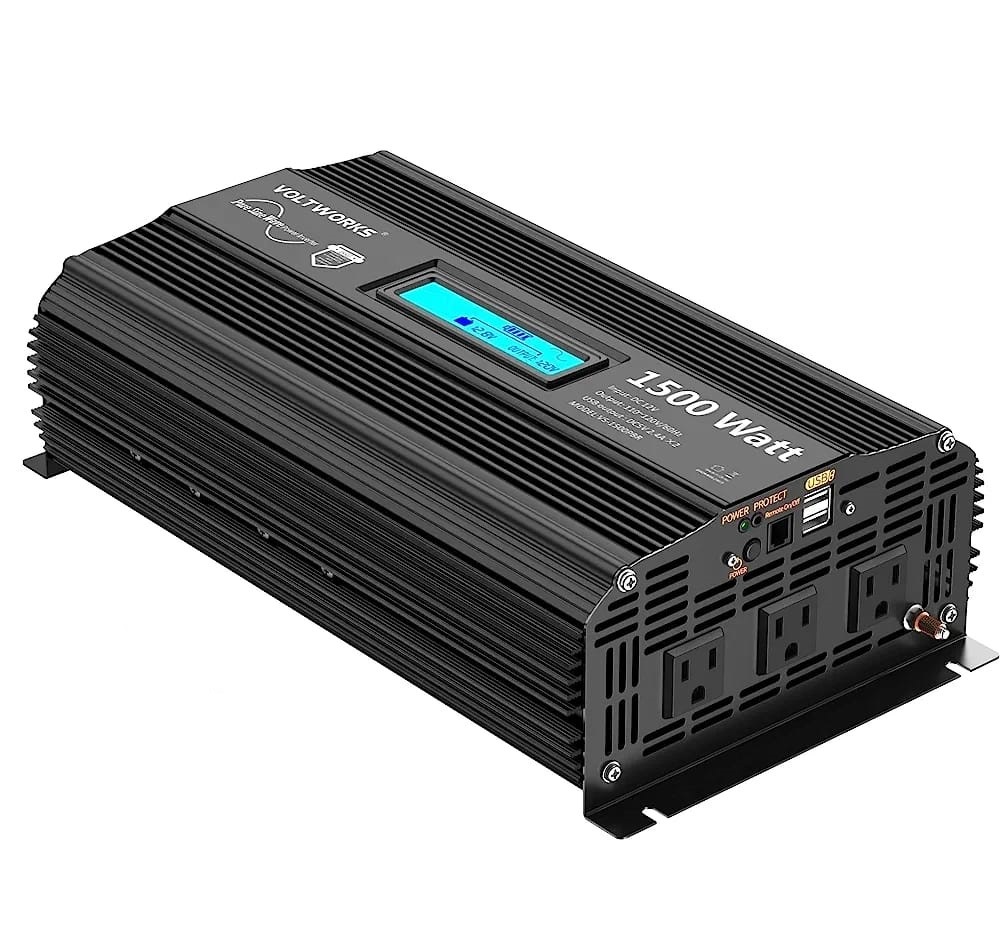
The actual continuous output of a 1500-watt inverter will be somewhere around 1200 watts with surge watts of between 2000 and 3000 watts. It also has a continuous surge watt of around 1800 watts for 15 minutes.
2000-Watt Inverter
A 2000-watt inverter provides even more power capacity and can handle appliances towards the upper end of the above 1000-watt range. It offers additional headroom for appliances with high starting currents or power spikes. A 2000-watt inverter with 6000-watt surge watts is a powerful inverter that can run high-wattage appliances
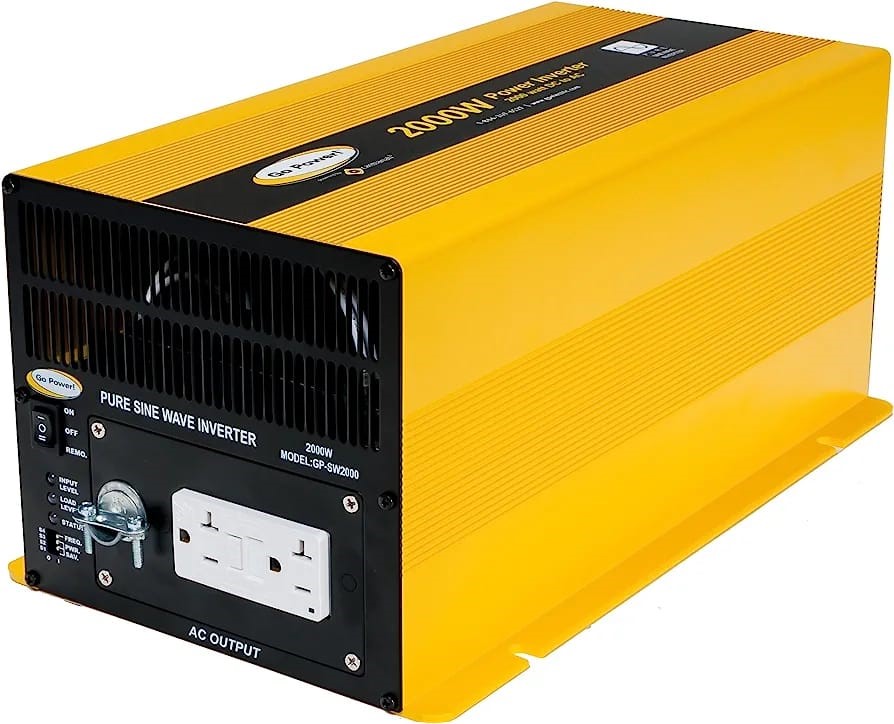
The power rating of an inverter must be greater than or equal to the power rating of the appliances that will be powered by the inverter. For example, if you are powering a 1,000-watt appliance with an inverter, the inverter must have a power rating of at least 1,000 watts.
If the appliance is designed to operate on 120 volts, the inverter must also have an output voltage of 120 volts.
What Inverter for Medium Wattage Home Appliances
Medium Power Appliances consume between 500 – 900 Watts of power. Several home appliances typically fall within this wattage range. Here are some examples:
Coffee Makers: Certain coffee makers, particularly those with larger carafes or additional features, can consume between 800 to 1000 watts.
Toaster Ovens: Medium-sized toaster ovens typically consume around 800 to 1000 watts, providing efficient toasting and baking functions.
Electric Grills: Some electric grills, especially those with larger cooking surfaces or higher power ratings, can range from 800 to 1000 watts.
Radiant Heaters: Radiant heaters, often used for localized heating in small areas, can consume between 500 to 1000 watts, depending on the model and settings.
Electric Skillets: Electric skillets or frying pans typically consume around 800 to 1000 watts, providing efficient and controlled cooking.
To power appliances in the 500-1000 watt range, such as those with a maximum power consumption of 700 or 1000 watts, you would need an inverter with an appropriate power capacity. Here are two options to consider:
700-Watt Inverter
A 700-watt inverter would be suitable for powering appliances in the lower end of the 500-1000 watt range. It provides a buffer for power surges and ensures the smooth operation of your appliances. Look for a pure sine wave inverter for better compatibility with sensitive electronics.
A 700-watt inverter is meant to run appliances up to 700-watt max however it can support a continuous output somewhere around 600 watts. This is because of efficiency and conversion losses. Operating at 600 watts also ensures that the inverter is not overloaded.
1000-Watt Inverter
A 1000-watt inverter offers more capacity and can comfortably handle appliances towards the upper end of the 500-900 watt range. It provides additional headroom for power spikes and potential future needs.

As stated before a 1000-watt inverter can run a wide range of appliances. The actual continuous output of a 1000-watt inverter will be somewhere around 900 watts. This is because of the efficiency losses from converting DC power to AC power and losses through the wiring.
What Inverter for Small Medium Wattage Home Appliances
Small Medium-wattage appliances include appliances that have power requirements within the 100-500 watt range.
There are several appliances that typically fall within the wattage range:
Desktop Computer: Depending on the components and usage, a desktop computer typically consumes between 200 to 300 watts depending on the make.
Gaming Consoles: Gaming consoles such as PlayStation and Xbox usually have power consumption ranging from 200 Watts.
Television: The wattage of televisions varies based on size, type, and energy efficiency. Many TVs in the range of 32 to 55 inches consume between 100 to 300 watts, but larger or more advanced models can go up to 500 watts.
Room Air Purifier: Small to medium-sized air purifiers generally consume between 50 to 200 watts, depending on the model and fan speed settings.
Audio Systems: Stereo systems, speakers, and amplifiers often fall within the 100 to 300-watt range, with the exact wattage varying based on the specific components and configuration.
Electric Blankets: Electric blankets typically consume around 50 to 150 watts, providing warmth while consuming relatively low power.
However, be sure to check the specific power ratings of your appliances to ensure compatibility.
300-Watt Inverter
A 300-watt inverter would be sufficient to power appliances in the lower end of the 100-500 watt range. You should not power appliances with a wattage higher than 200 watts. The actual continuous output of a 300-watt inverter will be somewhere around 200 – 220 watts.
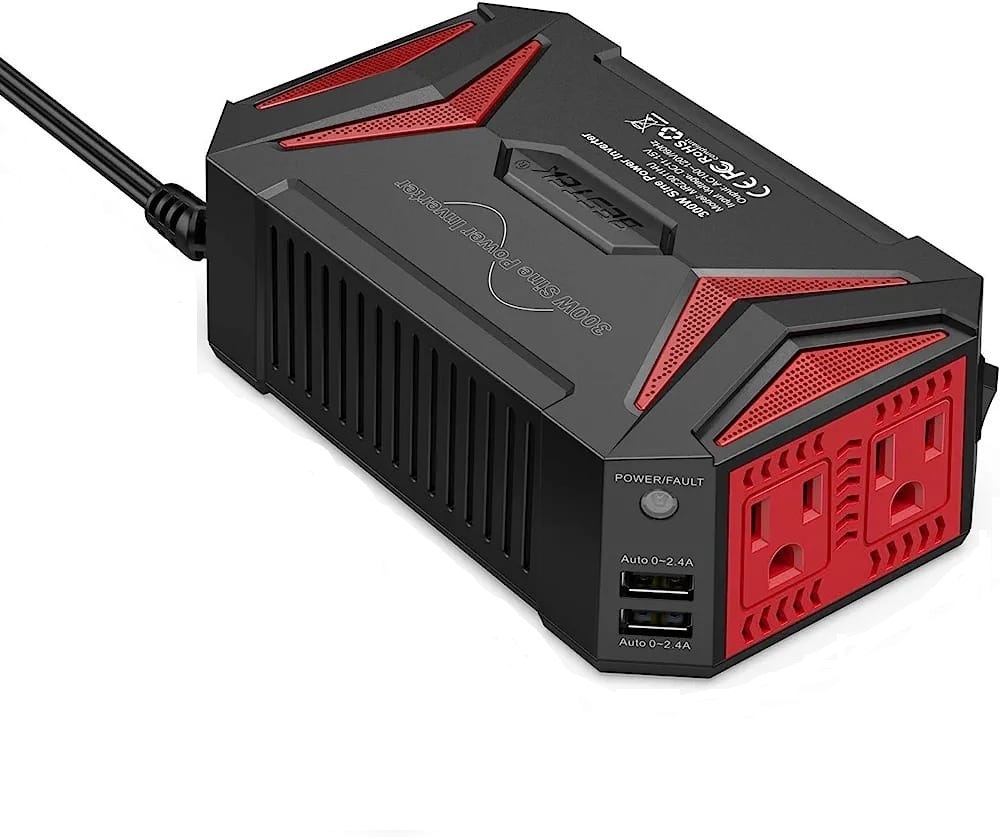
This is because of the efficiency losses from converting DC power to AC power and losses through the wiring. This will also ensure that the inverter remains cool and you don’t overwork your fan it also provides a buffer for power surges and ensures that your appliances operate smoothly.
500-Watt Inverter
A 500-watt inverter offers a bit more capacity and can comfortably handle appliances towards the upper end of the 100-500 watt range. A 500-watt inverter is meant to run appliances up to 500-watt max however it can support a continuous output somewhere between 400 watts. This is because of efficiency and conversion losses.
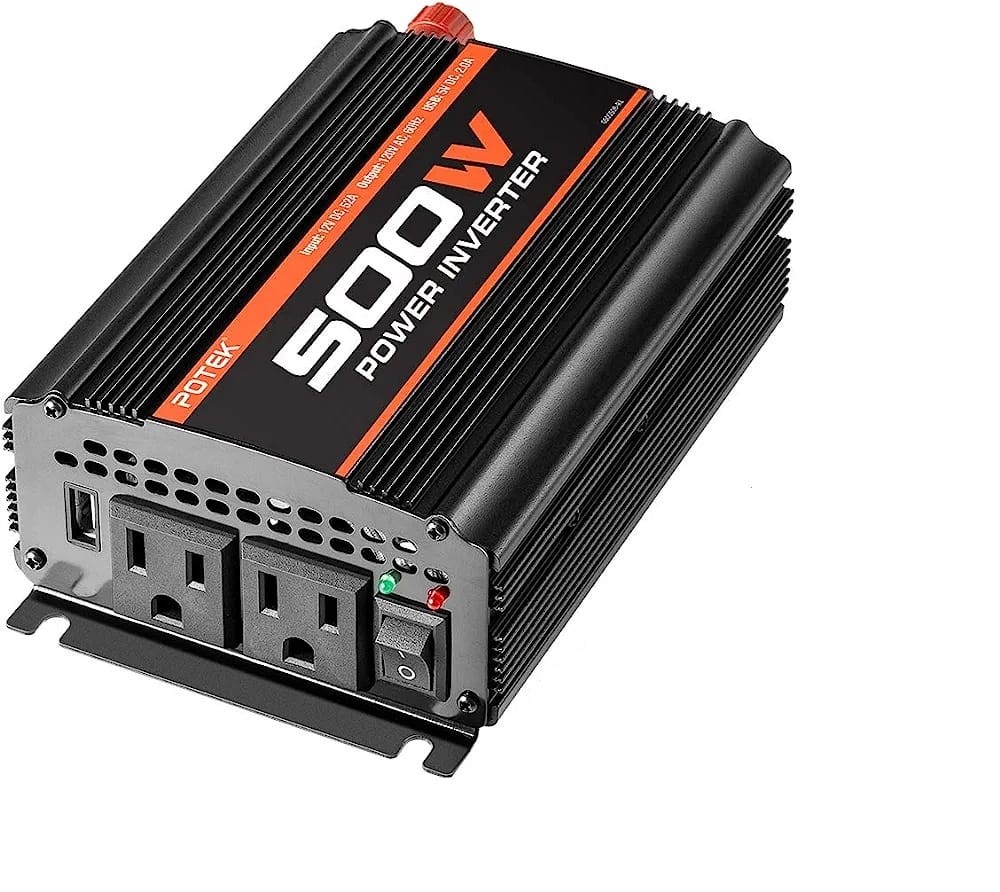
Operating at 400 watts also ensures that the inverter does not overheat. It provides additional headroom for power spikes and potential future needs.
What Inverter for Small Low-Wattage Devices
Small low-wattage devices include Smartphones, tablets, and some laptops that have power requirements ranging from a few watts to around 100 watts.
Here are a few examples of the types of devices:
Smartphones and Tablets: Charging smartphones and tablets typically require only a few watts of power (5 Watts for normal chargers and 20 Watts for fast charging)
Laptops: Most laptops consume between 30-100 watts of power,
LED Lights: Energy-efficient LED light bulbs consume around 10 watts of power.
Fans: Electric fans usually consume between 30-100 watts of power
LED Desk Lamp: LED desk lamps are known for their energy efficiency and often consume between 5 to 15 watts, providing sufficient lighting for reading or working.
Electric Toothbrush: Electric toothbrushes typically have low wattage ratings, often ranging from 1 to 5 watts.
USB Chargers: USB chargers used for charging smartphones, tablets, or other small electronic devices generally have low wattage, usually around 5 to 10 watts.
Electric Shavers: Most electric shavers have wattage ratings in the range of 10 to 25 watts.
For small low-wattage devices, a 100-200 watt inverter would typically be sufficient. By choosing an inverter within this wattage range, you can ensure that it can comfortably handle the power needs of your small devices.
Types of Inverters for Low-Wattage Devices
Micro Inverter
Micro inverters are designed for low-power applications and are commonly used for small electronic devices like laptops, smartphones, and other low-wattage gadgets. They usually have a power output of around 100-150 watts, making them suitable for powering small devices.
Car Power Inverter
Car power inverters are designed to be used in vehicles but can also be used in a home setting. They typically connect to a car’s battery or cigarette lighter port and provide AC power outlets. Car power inverters come in various wattage ratings, including options suitable for small devices.
150-Watt Modified Sine Wave Inverter
Modified sine wave inverters are more affordable than pure sine wave inverters and can handle low-wattage devices without any issues.
They convert DC power from a battery source to AC power with a modified square wave output. Modified sine wave inverters are available in a range of wattage ratings, so you can choose one that matches your power requirements.
Remember to consider the total power requirements of all the devices you plan to run simultaneously and choose an inverter with a wattage rating that is higher than the total. This will allow for any power surges or startup currents that devices may have.
If your power requirements are higher than this you’ll need to size up your inverter.
Considerations when choosing an Inverter
When choosing an inverter, it is important to consider various factors to ensure it meets your specific needs
Pure Sine Wave Inverters vs Modified Sine Wave Inverters
Inverters come in two basic output designs – sine wave and modified sine wave. Most 120VAC devices can use the modified sine wave, but there are some notable exceptions. Devices such as laser printers are damaged when provided mod-sine wave power. Motors and power supplies usually run warmer and less efficiently on mod-sine wave power.

Some things, like fans, amplifiers, and cheap fluorescent lights, give off an audible buzz on modified sine wave power. However, modified sine wave inverters make the conversion from DC to AC very efficient. They are relatively inexpensive, and many of the electrical devices we use every day work fine on them.
Sine wave inverters can virtually operate anything. Your utility company provides sine wave power, so a sine wave inverter is equal to or even better than utility-supplied power. A sine wave inverter can “clean up” utility or generator-supplied power.
Input and Output Connections
Ensure the inverter has the appropriate input connections (e.g., DC battery connection) and output connections (e.g., AC outlets) to suit your needs. Multiple AC Outlets will allow you to hook up different appliances at the same time. These outlets may include standard household outlets (120V) and, in some cases, higher voltage outlets (240V) depending on the model.
Some inverters include USB ports that allow them to charge smartphones, tablets, and other USB-powered devices. This can be useful when using the inverter as a portable power source.
Efficiency and Energy Saving
Consider inverters with higher efficiency ratings, as they will waste less power during the conversion process.
Additionally, it’s worth noting that if you anticipate needing to power devices with higher wattage requirements in the future, you may want to consider getting a slightly more powerful inverter to accommodate those needs.
Internal Battery Chargers
Inverters are made with various internal features and many permit external equipment interfaces. Common internal features are internal battery chargers which can rapidly charge batteries when an AC source such as a generator or utility power is connected to the inverter’s INPUT terminals.
Auto-transfer Switch
Auto-transfer switching is also a common internal feature that enables switching from either one AC source to another and/or from utility power to inverter power for designated loads. Battery temperature compensation, internal relays to control loads, automatic remote generator starting/stopping, and many other programmable features are available.
Step-up Transformer
Most inverters produce 120VAC but can be equipped with a step-up transformer to produce 120/240VAC. Some inverters can be series or parallel “stacked-interfaced” to produce 120/240VAC or to increase the available amperage.
Multiple AC Outlets
Some inverters include multiple AC outlets that allow them to power multiple devices simultaneously. This can be useful in situations where multiple devices need to be powered at the same time.
Load Sensing
Some inverters include load-sensing features that allow them to adjust the power output based on the power requirements of the connected devices. This can help to improve the efficiency of the inverter and extend the battery life.
Remote Control Capability
Some models may offer a remote control option, allowing you to operate the inverter from a distance for added convenience. This can be useful when using the inverter in a hard-to-reach location, such as on a rooftop or in a remote cabin.
LED Display or Digital Monitoring
Many inverters include an LED display or digital monitor to provide information such as input voltage, output voltage, power usage, and battery level, enabling you to monitor the performance and status of the inverter.
Energy-Saving Mode:
Some inverters have an energy-saving mode that automatically adjusts the power output according to the connected load, optimizing efficiency and conserving energy.
Safety Features and Protections
Look for features like overload protection, short circuit protection, and thermal shutdown to safeguard your appliances and the inverter itself.
Overload Protection
An Inverter will have built-in overload protection, which automatically shuts down the inverter if the power load exceeds its capacity. This feature helps to prevent damage to the inverter and connected appliances.
Short Circuit Protection
Short circuit protection safeguards the inverter and connected devices in case of a short circuit, reducing the risk of electrical hazards.
Thermal Shutdown
Inverters often have a thermal shutdown feature that turns off the inverter if it becomes too hot. This protects the internal components and prevents overheating.
Safety Certifications:
Look for inverters that comply with safety certifications, such as UL (Underwriters Laboratories) or ETL (Intertek), to ensure that they meet industry safety standards.
Input and Output Voltage
Remember to check the specific features and specifications of the inverter you are considering, as they may vary among different models and brands.
An Off-Grid Inverter will also have an input voltage between 12V, 24v, and 48V. The input voltage must be matched to the DC source (Battery, Solar Panel).
- 12V battery system -> inverter below 1000W
- 24V battery system -> inverter from 1000-2000W
- 48V battery system -> inverter from 3000W and above
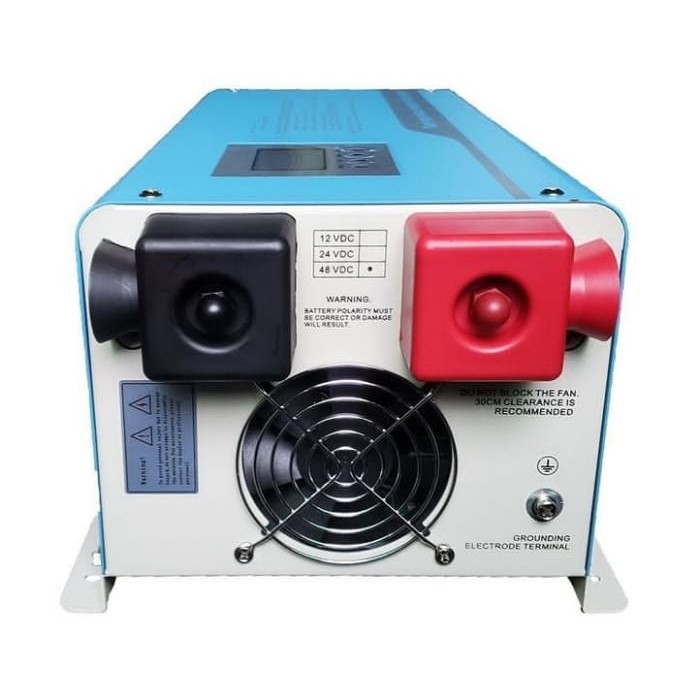
The output voltage of an Inverter will be between 120V and 240V depending on your appliance you will also need to match the voltage of the appliance to the Inverter. A pure sine wave inverter is preferred for most systems as it is safe, efficient, and provides a stable source of power.
How Inverter Size Affects Other Components in an Off-Grid Solar Power System
The size of an inverter is an important factor in determining the overall size and capacity of an off-grid solar power system. This is because the size of the inverter will determine how much power can be delivered to the loads (appliances and devices) in the system, and therefore how much power needs to be generated and stored by the solar panels and batteries.
How Inverter Size Affects the Size of the Solar Panels
The size and number of solar panels needed for an off-grid solar power system depend on the amount of power that needs to be generated to meet the demands of the loads, as well as the climate and sunlight conditions in the location where the system will be installed.
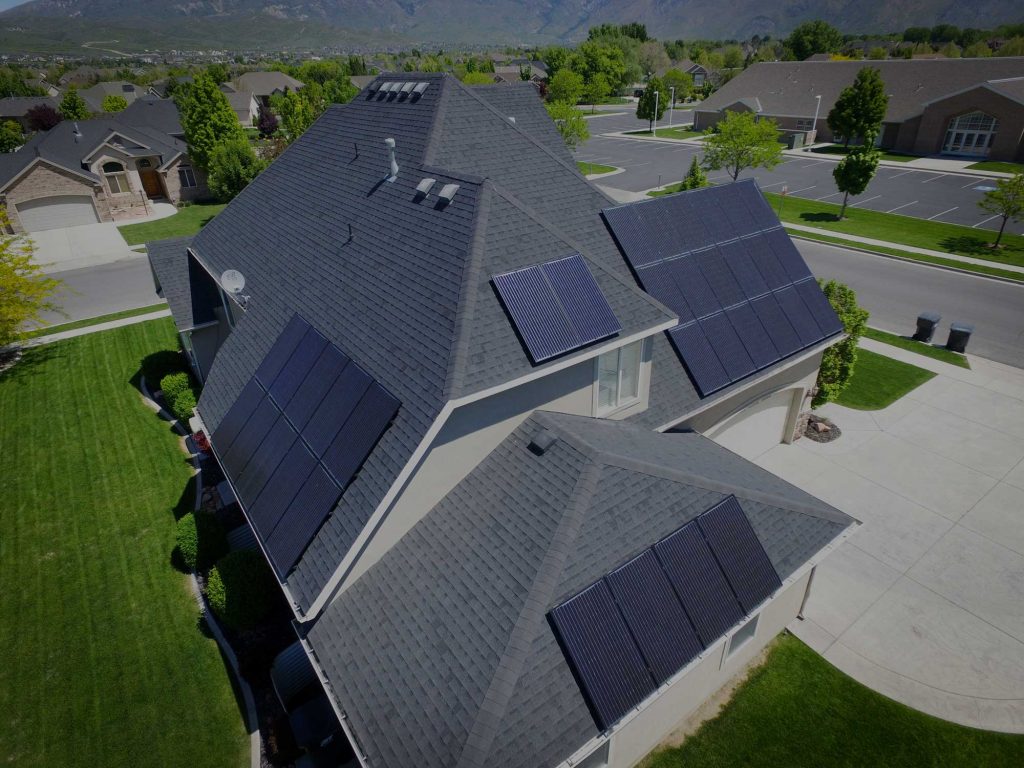
The inverter’s capacity will determine how much power can be delivered to the loads, which in turn will determine how much power needs to be generated by the solar panels. If the inverter is too small, it may not be able to handle the power demands of the loads, which could lead to underperformance of the solar panels and batteries.
As a general rule of thumb, the size of your inverter should be similar to the DC rating of your solar panel system; if you are installing a 3 kilowatt (kW) system, you can expect the proposed inverter to be around 3000 W, plus or minus a small percentage.
There are two main types of setups when using inverters with Solar Panels; Grid-tied and Off-Grid systems.
Grid-Tied Inverter
In a Grid-tied system, your Solar power system is working alongside power supplied by your mains power. Solar Power is delivered to your home alongside power from your mains. If solar power is insufficient power switches back to grid power.
The inverter constantly feeds power to your mains and the system works alongside your grid power. There are minimal interruptions in case of cloudy conditions and increased power demand.
You also have the option
Off-Grid Inverter
An Off-Grid inverter works in a stand-alone system without an external power source. In these setups Solar Panels charge a Battery Bank with DC power, the Inverter will convert the power from the batteries to AC power.
This inverter will rely on the power from the batteries and if the batteries are depleted or get too hot there may be disruptions in the system.
You can also create a hybrid system and combine the two with an off-grid system when you have no power from the Grid and a Grid-tied inverter to supplement power from your solar system when there is high demand.
How Inverter Size Affects Battery Size
The size and number of batteries needed for an off-grid solar power system also depend on the amount of power that needs to be stored to meet the demands of the loads. The inverter’s power rating will determine how much power can be delivered to the loads. The load turn will determine how much power needs to be stored by the batteries.
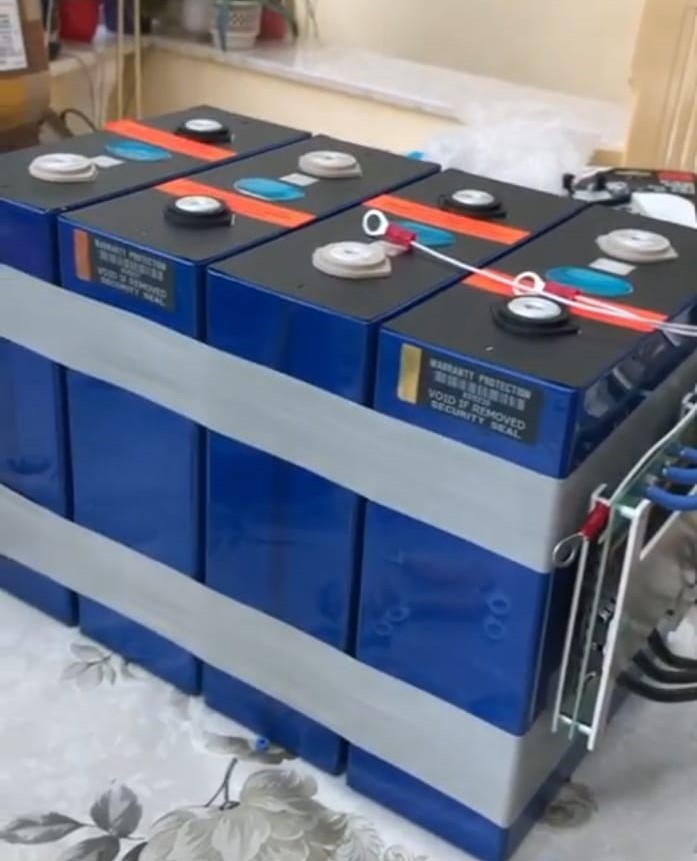
Voltage
The efficiency of an inverter is determined by its ability to convert the DC power from the battery bank into usable AC power for your home. When the voltage of the inverter matches the voltage of the battery bank, the inverter operates at its highest efficiency. This means that more of the DC power from the battery bank is converted into usable AC power, reducing energy waste and increasing the overall efficiency of the system.
Different types of Inverters have different voltage requirements, and using an inverter with an incompatible voltage to the battery bank can damage or even destroy your batteries.
Amperage
Voltage and amperage are two critical factors that determine the amount of power being used in an electrical system. In a solar power system, the voltage of the inverter can influence the amount of amperage pulled from the system.
In general, the higher the voltage, the lower the amperage, and vice versa. This is due to the relationship between voltage, amperage, and power, which is expressed by the formula:
Power (in watts) = Voltage (in volts) x Amperage (in amps)
When the voltage is high, the inverter can produce the same amount of power with fewer amps, which means less stress on the electrical components and wiring in the system. Conversely, an inverter operating at a lower will pull more amps to produce the same amount of power, which can result in increased stress on the system.
For example, let’s say you have a 1500-Watt inverter and you want to power a 1000-watt load. If the inverter has a voltage of 12 volts, it will need to pull approximately 83 amps (1000 watts / 12 volts = 83.3 amps) to power the load. However, if the inverter has a voltage of 24 volts, it will only need to pull approximately 42 amps (1000 watts / 24 volts = 41.7 amps) to power the same load.
Amp-hour and Watt-hour Rating
From our previous example, we’ve seen if you are powering a 1000-watt appliance on a 24-V system you’ll need 42 amps. If you are powering this device for 5 hours then you’ll use up around 200 Amp-hours.
If you remove efficiency losses a 24v 200Ah Battery will power a 1000-watt Appliance for up to 4 hours through Inverter rated 1500 watts or more. You can also replace this load requirement with the Inverter. For example, a 1000-Watt Inverter will be drawing 42 amps from the Battery. So you can choose a 24V 200Ah Battery for a 1000-Watt Inverter.
In order to size your battery requirements, you’ll need to add up your power requirements. The wattage of every appliance is indicated on the nameplate.
Take every appliance in your home take the Wattage and multiply by how long you use the device. This will give you the Wh requirements for your Battery Bank. Be sure to also take into consideration the surge watt rating of the devices vs the running watts.
| Appliance | Wattage (Watts) | Running Time | Watt-Hours |
| Refrigerator & Lights | 300 Watts | 8 hrs | 2400 |
| Air Conditioning | 1000 Watts | 10 hrs | 10000 |
| Kitchen Appliances | 3000 Watts | 1 hr | 3000 |
| Entertainment Units | 600 Watts | 6 hrs | 1800 |
| Bathroom & Laundry | 2000 Watts | 5 hrs | 10000 |
| Total | 27,200 |
But if you intend to build a DIY system to convert the Watt-Hours to Amp-Hours you simply divide the Watt-Hours by the voltage.
Let’s say you running off a 24-volt system:
27,200 Watt-Hours / 24 Volts = 1133 Ah
You will need 6 200 Ah lithium batteries wired to power your home. The batteries will be wired in series and parallel to make a 24v battery bank.
Deep cycle batteries are specially designed to provide a steady and reliable source of power over an extended period of time, making them an ideal choice for solar power systems. Solar power systems require batteries to store the energy generated by the solar panels.
Unlike car batteries, which are designed for short bursts of high energy, deep-cycle batteries are designed to discharge and recharge repeatedly over an extended period of time. They are built to handle the daily cycling of charge and discharge that is required for solar power systems, which can extend the battery’s life and provide a longer lifespan.
Lithium batteries and specifically LiFePO4 (Lithium Iron Phosphate) batteries are one of the best types of deep cycle batteries for solar power systems for several reasons:
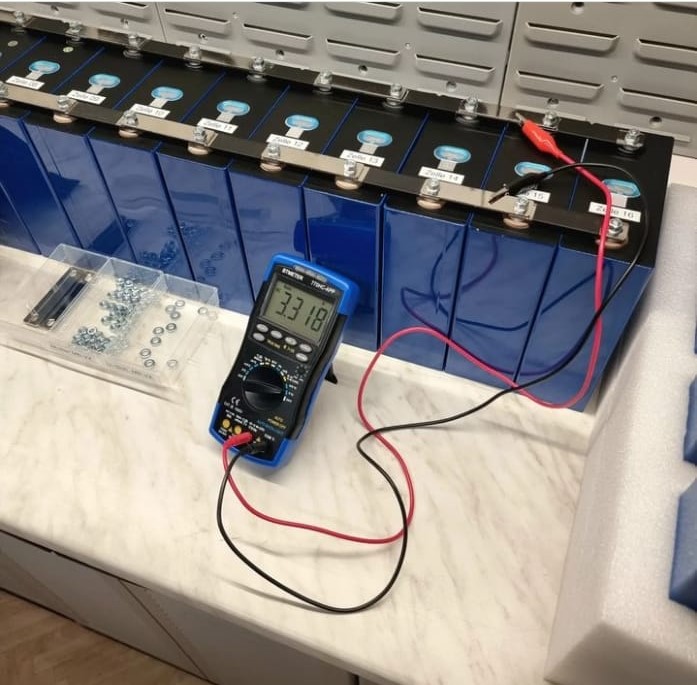
High Energy Density: LiFePO4 batteries have a high energy density, which means they can store more energy per unit of weight or volume than other types of batteries. This makes them an ideal choice for solar power systems, which require a lot of energy storage capacity in a compact form factor.
Long Cycle Life: LiFePO4 batteries have a long cycle life, which means they can be charged and discharged repeatedly without significantly degrading their capacity or performance. This makes them a durable and long-lasting choice for solar power systems, which require batteries that can handle frequent charging and discharging cycles.
High Efficiency: LiFePO4 batteries have a high charge and discharge efficiency, which means they can convert more of the energy generated by the solar panels into usable electricity. This makes them a more efficient choice for solar power systems, which rely on the battery to store and release energy.
Safety: LiFePO4 batteries are considered one of the safest types of lithium-ion batteries available. They are less prone to overheating and thermal runaway, which can lead to fires or explosions. This makes them a safer choice for solar power systems, which require a reliable and safe source of energy storage.
Low Maintenance: LiFePO4 batteries require minimal maintenance compared to other types of batteries, such as lead-acid batteries. They do not require regular watering, and there is no need to check or top up the electrolyte levels.
Charge Controllers and Inverters
Charge controllers are used to regulate the charging of the batteries by the solar panels. The size of the charge controller needed for an off-grid solar power system will depend on the capacity of the solar panels and the batteries, as well as the charging requirements of the batteries.
Some modern Inverters will come with an MPPT charge controller built-in. MPPT stands for Maximum Power Point Tracking. MPPT technology works by constantly tracking the maximum power point of the solar panels and adjusting the voltage and current to ensure that the maximum amount of power is being generated and delivered to the load. This results in higher efficiency and greater power output from the solar panels.
The Size of the Wiring
The size of the wiring needed for an off-grid solar power system depends on the amount of power that needs to be transmitted from the solar panels and batteries to the loads, as well as the distance between the components. The size of the inverter will also determine the amount of power that needs to be transmitted, which in turn will determine the size of the wiring needed.
Reasons You Need an Inverter
Enable the use of AC appliances and devices
Off-grid solar power systems rely on batteries to store the DC electricity produced by solar panels, but most appliances and devices in homes and businesses require AC electricity to operate.
Inverters are needed to convert the DC electricity stored in batteries into AC electricity that can be used to power appliances and devices.
Ensure reliable and stable power supply
Inverters are designed to provide a stable and reliable source of AC electricity, even in situations where the power output from solar panels fluctuates due to changes in weather conditions. This is achieved through various mechanisms, such as voltage regulation, waveform control, and surge protection.
Increase energy efficiency
Inverters are also important for improving the energy efficiency of off-grid solar power systems. Some types of appliances and devices, such as refrigerators and air conditioners, can be quite energy-intensive, especially when starting up.
Inverters with high surge ratings can provide the extra power needed to start these appliances and devices without overloading the batteries or the inverter.
Offer flexibility and control
Inverters can also provide a high degree of flexibility and control over off-grid solar power systems. For example, some inverters can be programmed to prioritize the use of solar power over other sources of electricity, such as backup generators. Inverters can also be used to monitor the performance of solar panels and batteries and to adjust settings to optimize energy usage.
Improve safety Inverters also play an important role in improving the safety of off-grid solar power systems. They are designed to protect against overvoltage, under voltage, short circuits, and other types of electrical faults that could potentially damage appliances, devices, or the solar power system itself.
How to Install an Inverter for Your Home
The installation of inverters can vary depending on the specific application and type of inverter being used. Here are some general steps involved in the installation process:
Determine the location: Select a suitable location for installing the inverter. Consider factors such as accessibility, ventilation, and proximity to the battery or power source.
Prepare the mounting surface: Ensure that the mounting surface is sturdy, secure, and able to support the weight of the inverter. Clean the surface and make any necessary adjustments or reinforcements if needed.
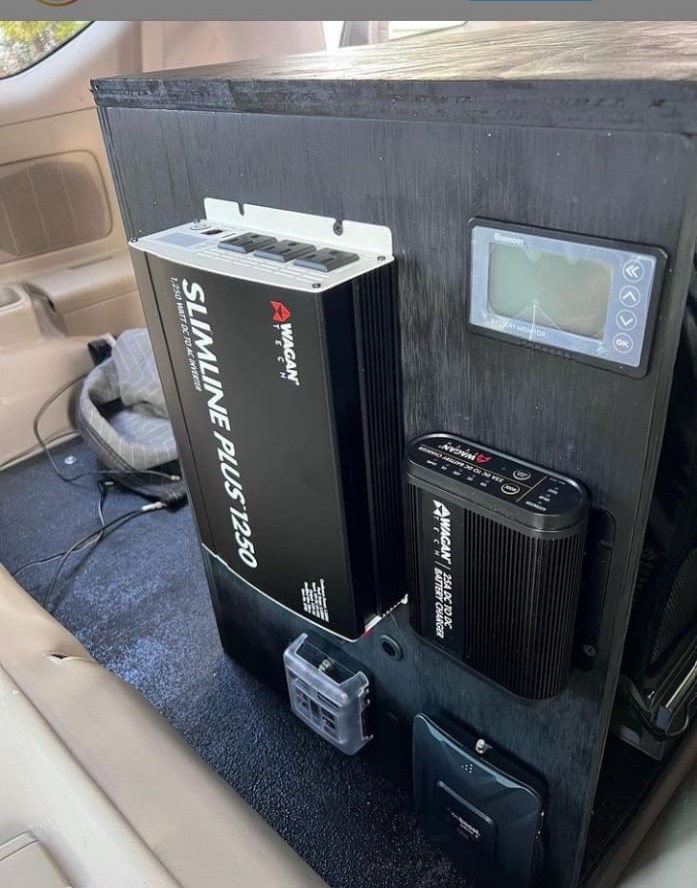
Connect the battery: In most cases, inverters are connected to a battery or power source for the DC input. Follow the manufacturer’s instructions to properly connect the positive (+) and negative (-) terminals of the inverter to the corresponding terminals of the battery or power source. Use appropriate wire gauge and connectors for a secure and reliable connection.
Connect the load: Determine the electrical loads or devices that will be connected to the AC output of the inverter. Depending on the specific model and requirements, connect the AC loads to the designated AC output terminals of the inverter. Use proper wiring techniques, such as using appropriate wire size and connectors, and ensure that the connections are secure and properly insulated.
Install additional components (if applicable): Depending on the specific inverter and installation requirements, you may need to install additional components such as fuses, circuit breakers, or surge protectors to protect the inverter and connected devices from electrical faults or surges. Follow the manufacturer’s instructions for installing and connecting these components correctly.
Configure settings and controls (if applicable): Some inverters may have adjustable settings or controls that need to be configured according to your specific requirements. These settings can include battery charging parameters, voltage/frequency regulation, load prioritization, or other programmable features. Consult the inverter’s user manual for guidance on setting up and configuring these parameters correctly.
Test and commission the system: Once the installation is complete, perform thorough testing to ensure the proper functioning of the inverter and the connected devices. Verify that the AC output is stable, the load is supported without issues, and all safety features are functioning correctly. Conduct any necessary adjustments or troubleshooting if required.
It is important to note that the installation process may vary based on the specific inverter model, system configuration, and local electrical codes and regulations. It is recommended to consult the manufacturer’s installation guide or seek professional assistance when installing inverters, especially for larger or complex systems.
How to Maintain an Inverter
Maintaining an inverter is essential to ensure its optimal performance and longevity. Here are some tips to help you maintain your inverter:
Read the manufacturer’s manual: Familiarize yourself with the manufacturer’s recommendations and instructions for maintaining your specific inverter model. The manual will provide valuable information on maintenance procedures, safety precautions, and troubleshooting guidelines.
Keep the inverter clean: Regularly clean the exterior of the inverter to prevent dust, dirt, and debris from accumulating. Use a soft cloth or brush to gently wipe away any particles. Avoid using harsh chemicals or abrasive materials that could damage the inverter’s surface.
Ensure proper ventilation: Inverters generate heat during operation, so it’s crucial to provide adequate ventilation to dissipate the heat. Ensure that the inverter has sufficient space around it for airflow and avoid obstructing the ventilation slots. Regularly check for any obstructions or buildup of dust that might impede proper airflow.
Check for loose connections: Periodically inspect the wiring connections and terminals of the inverter. Make sure all connections are secure and tight to prevent loose connections, which can lead to power losses, overheating, or electrical faults. If you notice any loose connections, tighten them appropriately or seek professional assistance if needed.
Monitor battery health: If your inverter is connected to a battery, monitor the battery’s health and performance regularly. Check the battery’s voltage levels, electrolyte levels (if applicable), and ensure proper charging. Follow the manufacturer’s recommendations for battery maintenance, including cleaning terminals, avoiding overcharging or deep discharging, and replacing batteries as needed.
Perform routine inspections: Regularly inspect the inverter for any signs of physical damage, wear and tear, or abnormal behavior. Look for loose parts, frayed wires, damaged components, or any unusual noises or odors. Address any issues promptly by seeking professional help or contacting the manufacturer’s customer support.
Protect against power surges and voltage fluctuations: Inverters can be vulnerable to power surges or voltage fluctuations. Consider installing surge protectors or voltage stabilizers to safeguard the inverter and connected devices from sudden spikes or drops in power. These protective devices can help extend the lifespan of the inverter and prevent damage.
Keep software/firmware up to date: If your inverter has software or firmware, periodically check for updates from the manufacturer. Keeping the software/firmware up to date ensures that you have access to the latest features, improvements, and bug fixes.
Follow proper shutdown procedures: When shutting down or turning off the inverter, follow the recommended procedures outlined in the manual. Improper shutdowns can lead to electrical issues or damage to the inverter’s components.
Regular maintenance checks: Consider scheduling regular maintenance checks by qualified technicians. They can perform more in-depth inspections, testing, and servicing to ensure the inverter is operating optimally.
By following these maintenance tips, you can maximize the performance and lifespan of your inverter, ensuring reliable and efficient power conversion for your electrical needs.
Overall, power inverters are a critical component in off-grid solar power systems, as they enable the efficient and reliable conversion of DC electricity to AC electricity, while also offering a high degree of flexibility and control over energy usage. When selecting an inverter for an off-grid solar power system, it’s important to choose a model that is appropriate for the size and capacity of the system, and that offers the features and functionality needed for the specific application.
Resources
Wikipedia. https://en.wikipedia.org/wiki/Power_inverter
Leave a Reply